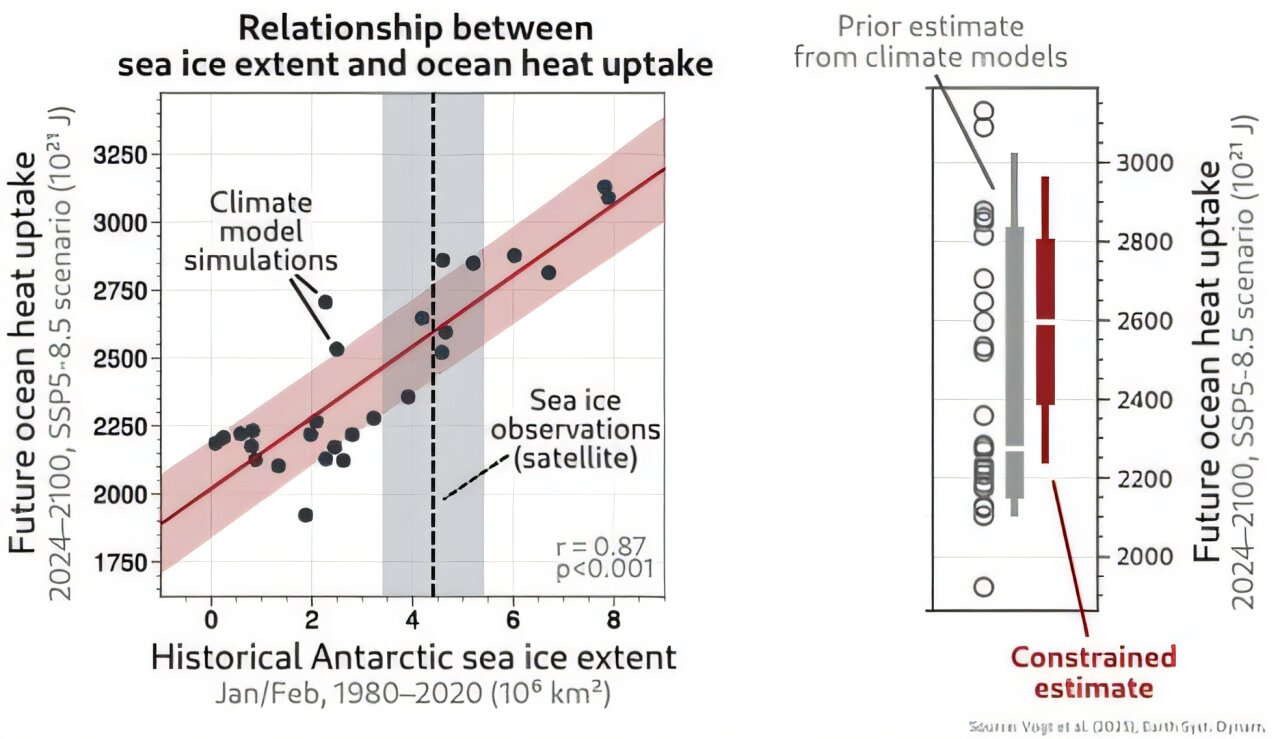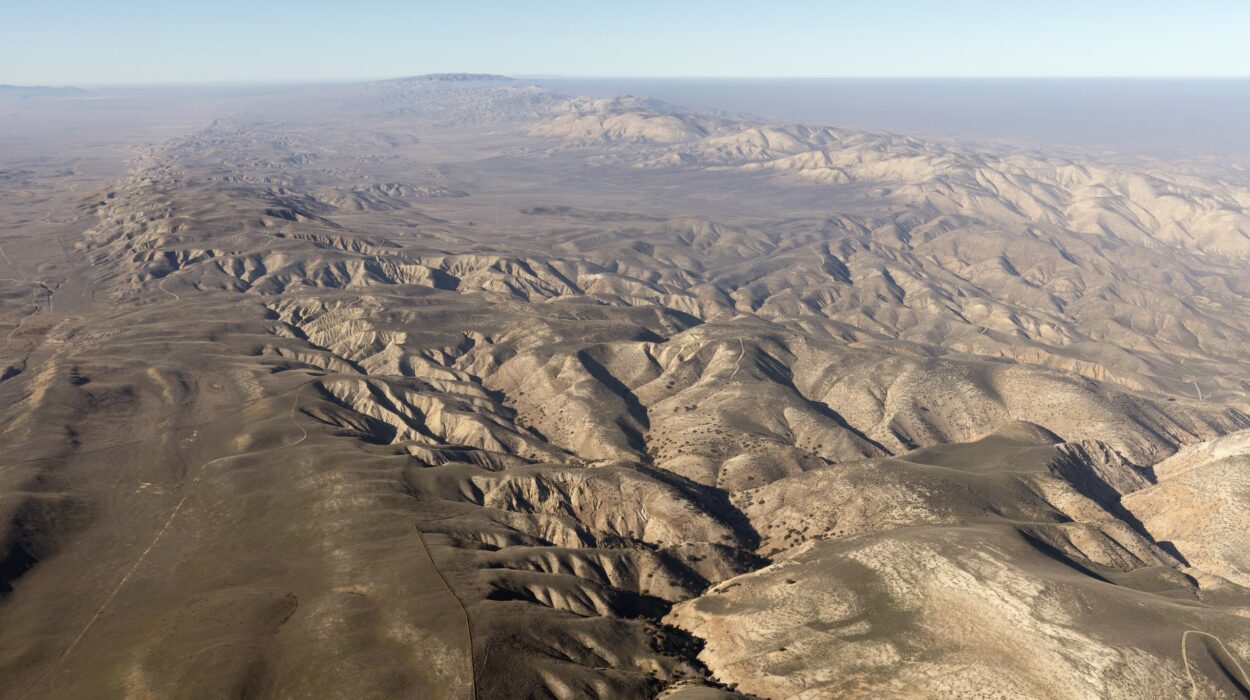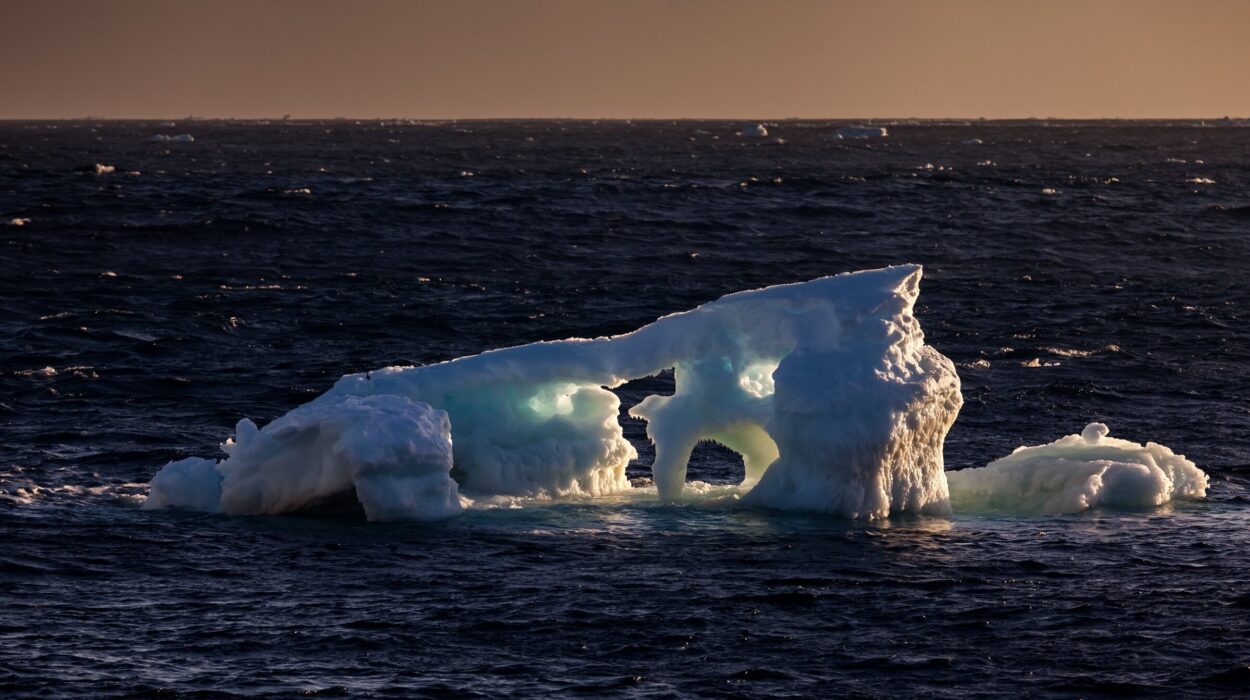Every so often, climate science uncovers a connection that changes the way we understand our planet’s future. A new study, published in Earth System Dynamics, has done exactly that—revealing a critical and previously underestimated link between Antarctic sea ice, cloud cover, and global warming.
At first glance, the idea seems almost counterintuitive. Antarctic sea ice covers less than four percent of the ocean’s surface, a relatively small area compared to the vastness of the global oceans. Yet, this small fraction turns out to hold enormous sway over the pace and severity of climate change. The study’s results are sobering: the more accurate we are about Antarctic sea ice in our models, the clearer it becomes that future warming and ocean heat uptake may be stronger than previously thought.
This discovery is more than just a technical correction—it represents a shift in our understanding of how the Southern Hemisphere’s climate system operates, and it has direct implications for how we prepare for a warming world.
What the Study Found
Led by Linus Vogt of Sorbonne University, the research team analyzed 28 Earth system models alongside satellite observations spanning four decades, from 1980 to 2020. They employed an approach known as an emergent constraint, a method that uses real-world observations to sharpen the accuracy of climate projections.
The findings were striking. Compared to the widely used CMIP6 climate models, the study suggests that:
- By 2100, global ocean heat uptake and the resulting thermal sea level rise could be 3–14% higher than previous estimates.
- Projected cloud feedback is 19–31% stronger, which directly increases climate sensitivity.
- Overall, global surface warming may be 3–7% greater than earlier predictions indicated.
These numbers might appear modest, but in the world of climate science, they are significant. A few percentage points translate into stronger heatwaves, more powerful storms, accelerated ice melt, and higher sea levels—affecting millions of lives and ecosystems worldwide.
The Surprising Role of Antarctic Sea Ice
For years, Antarctic summer sea ice was thought to be relatively stable and only weakly tied to human-driven climate change. This study upends that assumption. It shows that Antarctic sea ice is, in fact, a crucial indicator of the Southern Hemisphere’s climate system.
The models that best captured historical sea ice conditions simulated cooler ocean surfaces, colder deep ocean layers, and thicker cloud cover in mid-latitudes. These conditions, counterintuitively, created a system that reacts more strongly when greenhouse gases rise. In essence, the climate system’s starting point—the baseline of sea ice and ocean temperature—determines how sensitive the planet will be to future warming.
This explains why the extent of Antarctic sea ice is not just a local curiosity but a global climate lever.
Clouds, Oceans, and a Delicate Balance
The mechanism behind this link lies in the intimate coupling of sea ice, ocean currents, and atmospheric processes. Sea ice influences the reflectivity of the Earth’s surface: more ice means more sunlight reflected back into space. It also shapes ocean circulation patterns and affects the formation of clouds.
Clouds, in turn, play a double role in climate regulation. They cool the planet by blocking incoming solar radiation, but they also trap heat. The balance depends heavily on where and how clouds form. The study shows that greater historical sea ice extent strengthens cloud cover in key regions, enhancing their cooling effect. But as sea ice declines in the future, this protective layer of clouds diminishes, amplifying surface warming and driving the oceans to absorb more heat.
Linus Vogt, now based at New York University, described the team’s reaction to the discovery: “When we initially discovered this link between historical Antarctic sea ice and future global ocean heat uptake, we were surprised by the strength of the relationship. Antarctic sea ice covers less than 4% of the ocean’s surface, so how could it be so strongly associated with global ocean warming? Only after a lot of analysis did we understand the full implications of the sea ice-ocean-atmosphere coupling which is responsible for these global changes.”
Beyond Models: Why This Matters for the Real World
The implications of this research reach far beyond academic circles. Current climate models, as accurate and sophisticated as they are, may be systematically underestimating future warming because they simulate a Southern Ocean that is too warm in preindustrial conditions. This warm bias reduces their sensitivity to greenhouse gases.
By correcting this bias through an emergent constraint, Vogt and his colleagues demonstrate that the future may be hotter, stormier, and more unstable than policymakers have been led to expect. Thermal sea level rise alone, if underestimated by even 10%, could spell the difference between manageable adaptation and severe coastal flooding in many parts of the world.
Jens Terhaar, a senior scientist at the University of Bern and co-author of the study, emphasized this point: “While it has long been known that accurately representing clouds is crucial for climate projections, our study highlights that it is equally important to also accurately simulate the surface and deep ocean circulation and its interaction with sea ice.”
The Policy Dimension: Urgency Reinforced
If warming is indeed stronger than previously thought, the urgency of climate action becomes even clearer. A few degrees of global average warming may sound small, but in practice it amplifies extremes: longer droughts, harsher floods, collapsing ecosystems, and intensified risks for food security.
This study strengthens the case for rapidly reducing greenhouse gas emissions. It also highlights the importance of investing in Earth monitoring systems—particularly satellite observations of sea ice and clouds—and in refining climate models to capture the full complexity of ocean-atmosphere interactions.
The record-low Antarctic sea ice extent observed in 2023 may already be signaling the kind of regime shift these researchers warn about. If so, the window for avoiding the most severe outcomes is narrowing faster than expected.
As Vogt put it: “Several high-profile studies have used temperature trends over recent decades in an attempt to constrain future warming. However, we have now found that this approach can give misleading results. Accounting for the sea ice-related mechanism we identified leads to increased estimates of future ocean and atmospheric warming. This likely stronger warming calls for urgent action to reduce greenhouse gas emissions in order to avoid the increased heat waves, floods and ecosystem impacts associated with ocean warming.”
The Human Dimension
Scientific results like these are often expressed in percentages and projections, but their true meaning is human. Stronger warming means that by the end of the century, coastal cities could face more frequent flooding, agricultural systems could struggle under shifting rainfall patterns, and communities worldwide will encounter more extreme weather events.
This connection between Antarctic sea ice and global climate highlights how deeply interwoven Earth’s systems are. A patch of ice thousands of kilometers away can influence whether crops thrive or fail, whether coral reefs endure or bleach, whether millions of people must migrate from vulnerable coastlines.
To grasp this is to recognize that climate change is not a distant, abstract threat. It is an unfolding story that ties the frozen landscapes of Antarctica to the homes, livelihoods, and futures of people everywhere.
A New Lens on Climate Sensitivity
This study also underscores an important conceptual shift in climate science. For decades, scientists have debated the Earth’s climate sensitivity—the amount of warming expected if carbon dioxide levels double. The new findings suggest that sensitivity may be higher than assumed because the starting state of the Southern Ocean was not fully accounted for.
This realization challenges previous attempts to constrain future warming using short-term observed trends, which may not capture deeper systemic changes. By focusing on Antarctic sea ice, researchers have found a more reliable indicator, one that speaks to the underlying physics of ocean-atmosphere interaction rather than transient fluctuations.
Looking Ahead
The story of Antarctic sea ice is not finished. As climate change accelerates, this region will continue to act as both a warning sign and a driver of global change. Continuous monitoring and better integration of sea ice dynamics into climate models will be crucial for preparing societies for what lies ahead.
But beyond the technical details lies a profound lesson. The Earth is a system of delicate connections. A shift in the whiteness of Antarctic seas can ripple through cloud cover, ocean heat content, sea level rise, and the global climate itself. To ignore these connections is to underestimate the challenges before us. To acknowledge them is to strengthen our resolve to act.
Conclusion: A Call to Awareness and Action
The discovery that Antarctic sea ice plays a far greater role in global warming than previously understood is both sobering and motivating. It reminds us that climate change is not a distant event but a present and accelerating reality, shaped by mechanisms that are only now coming into full focus.
The science is clear: the future will be hotter and more unstable if greenhouse gas emissions continue unchecked. The lesson is equally clear: our response must be faster, deeper, and more committed than ever before.
What happens to the frozen edges of Antarctica is not isolated—it is tied to the rhythm of clouds, oceans, and the very atmosphere we breathe. By understanding this hidden link, we are reminded of both our vulnerability and our responsibility. The Earth is telling us its story. The question is whether we are ready to listen, and whether we are willing to act before it is too late.
More information: Linus Vogt et al, Increased future ocean heat uptake constrained by Antarctic sea ice extent, Earth System Dynamics (2025). On Research Square: DOI: 10.21203/rs.3.rs-3982037/v2






